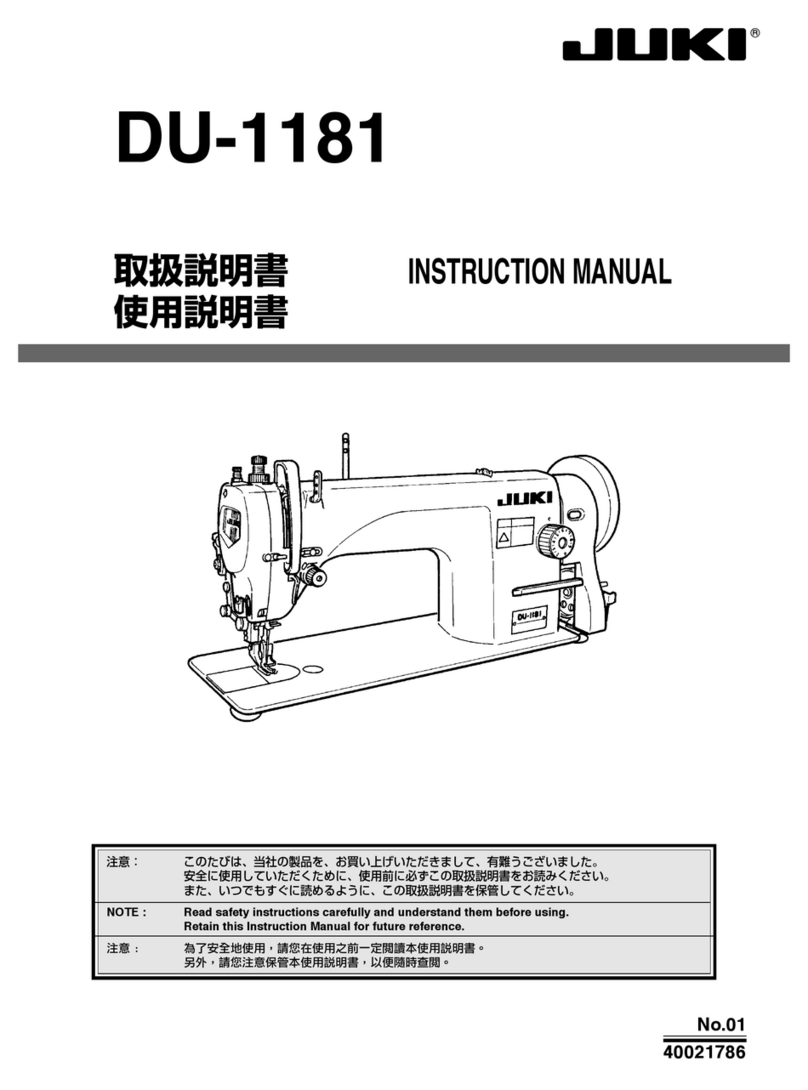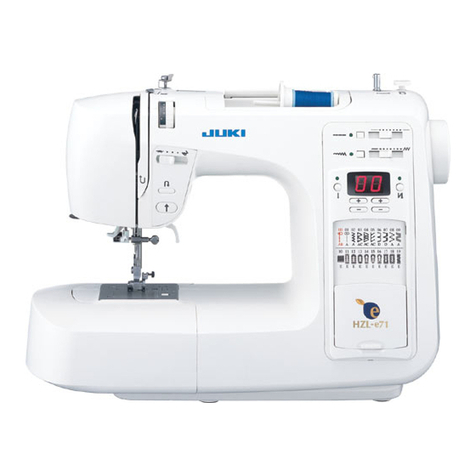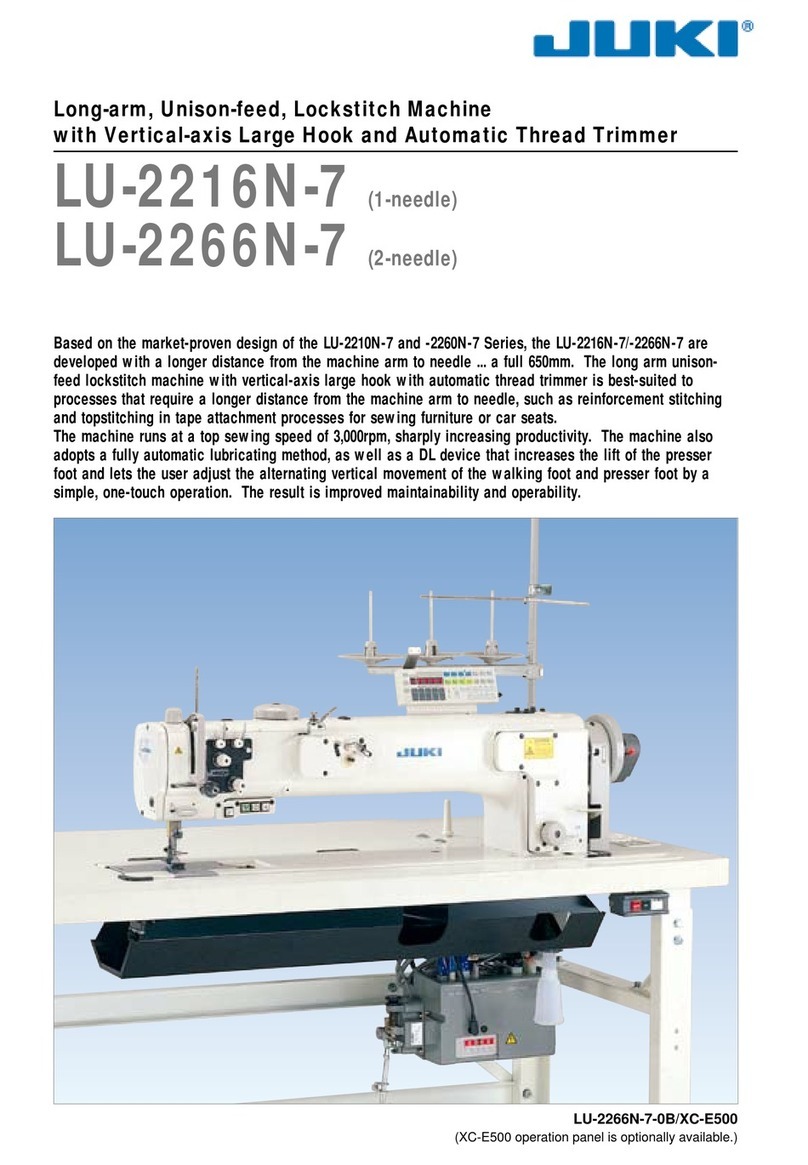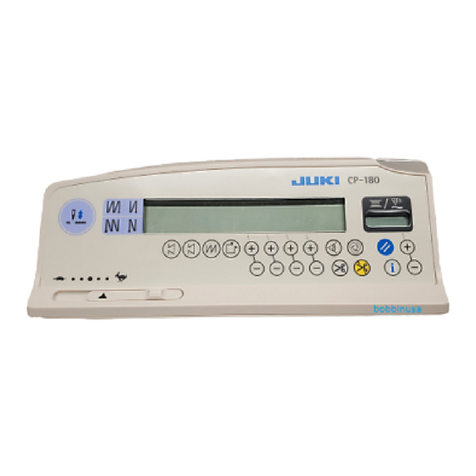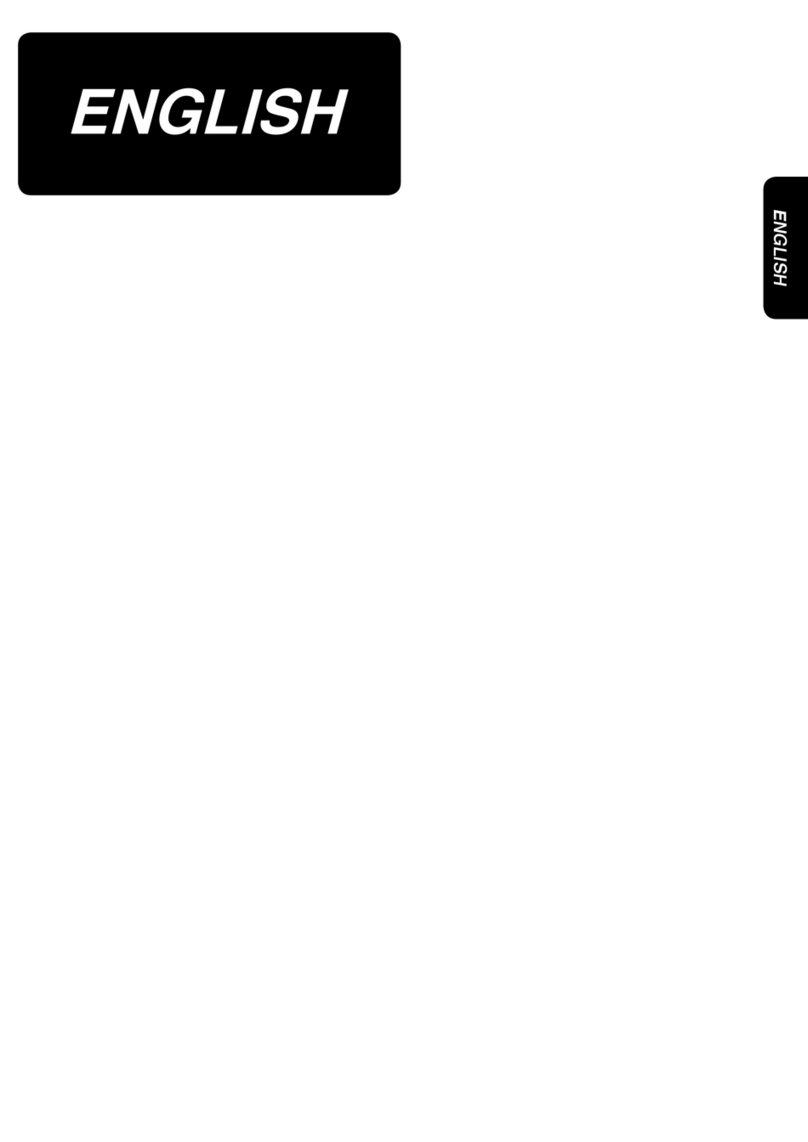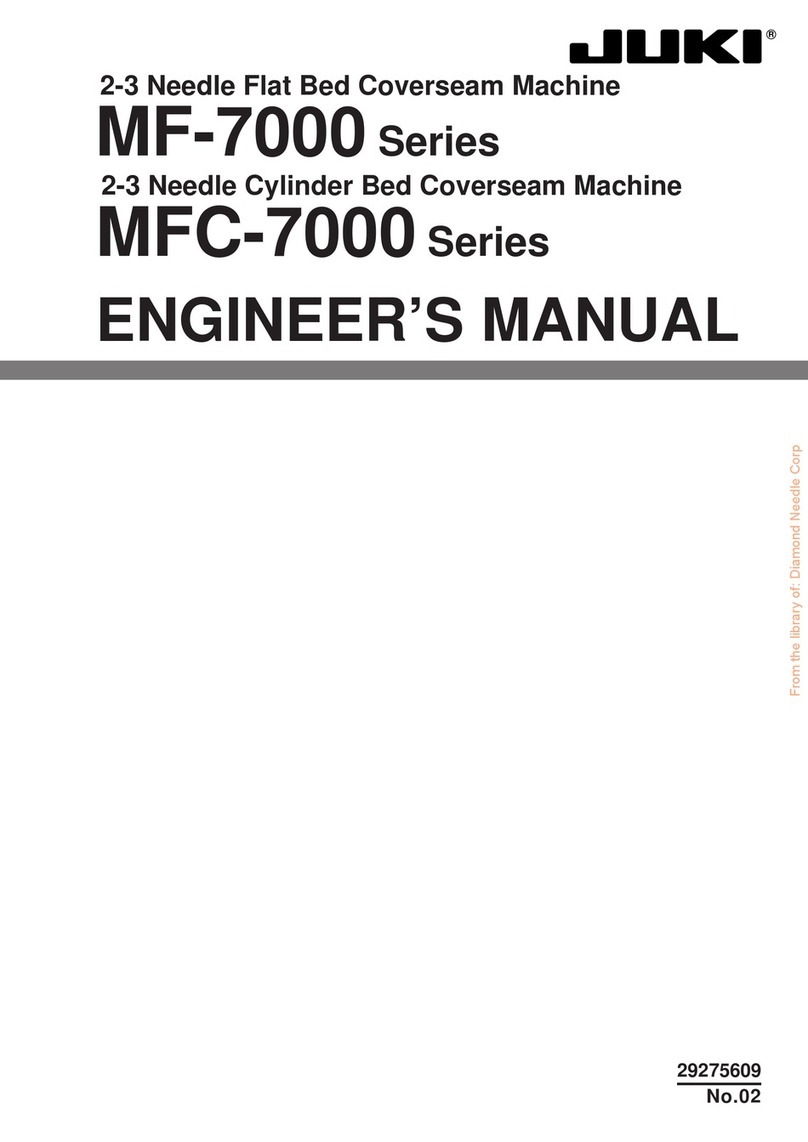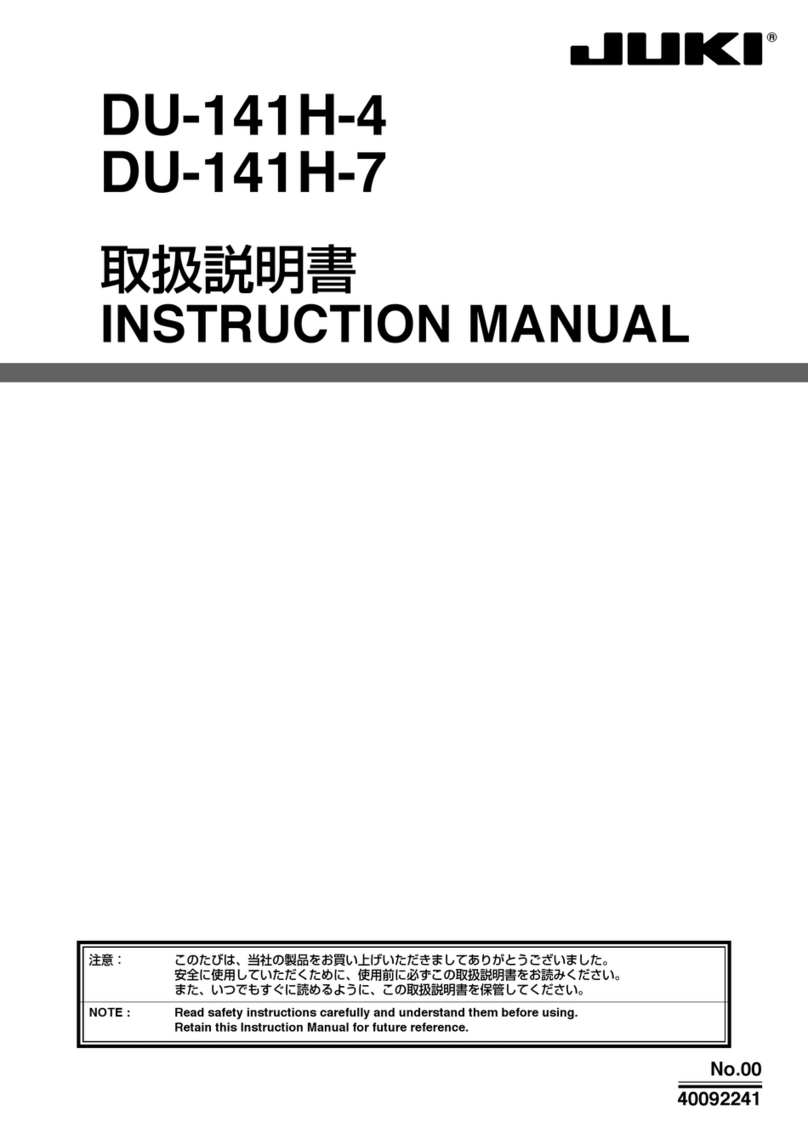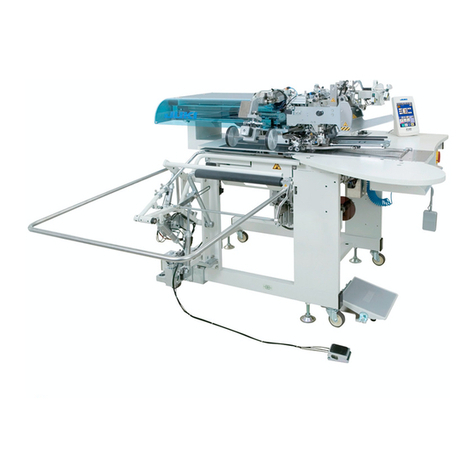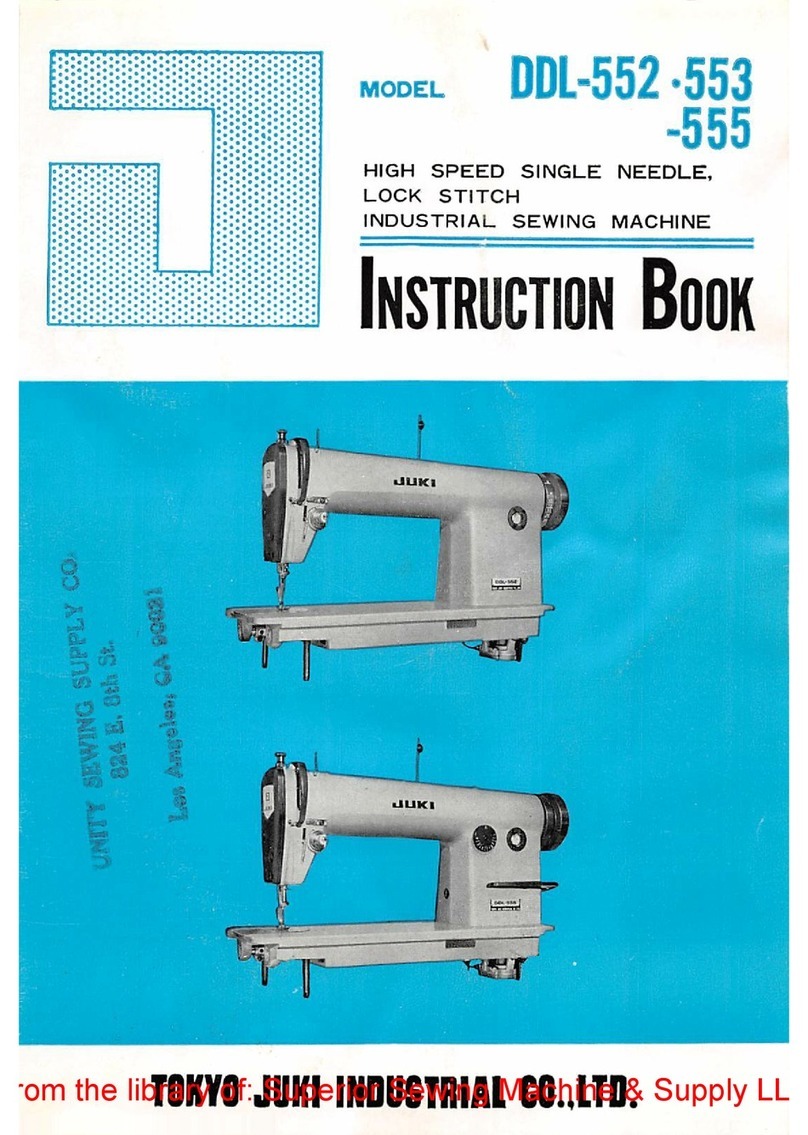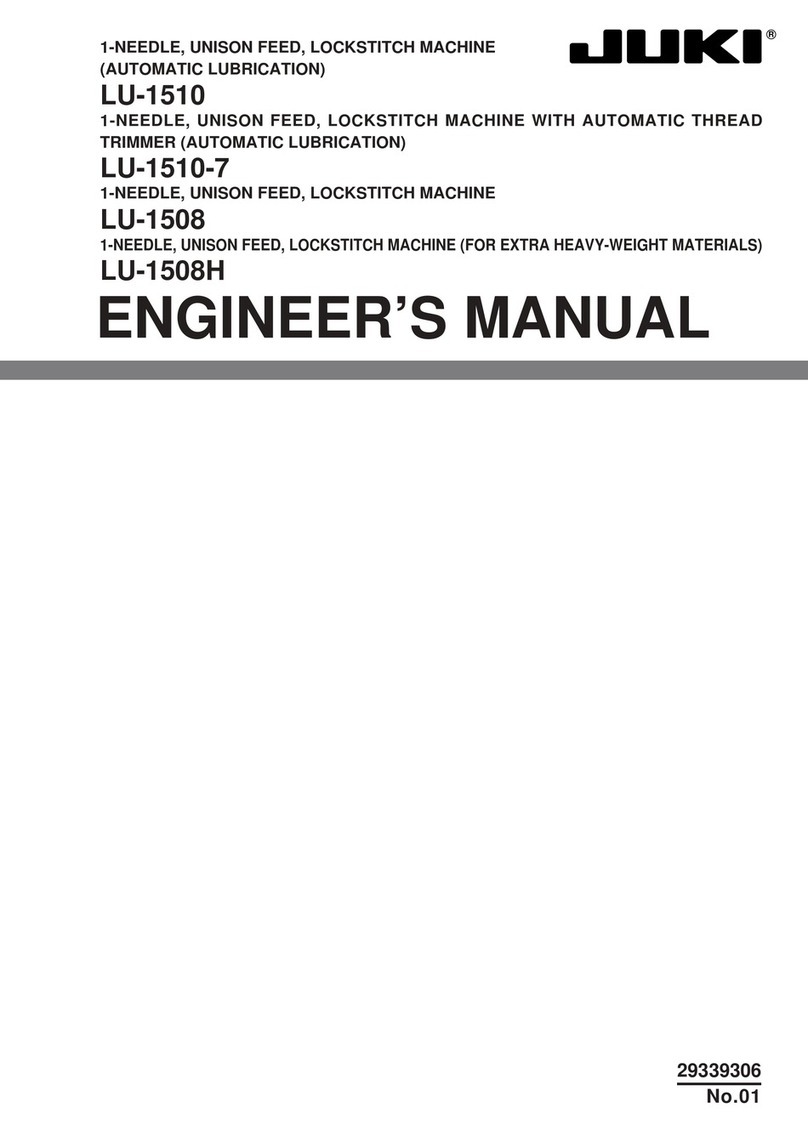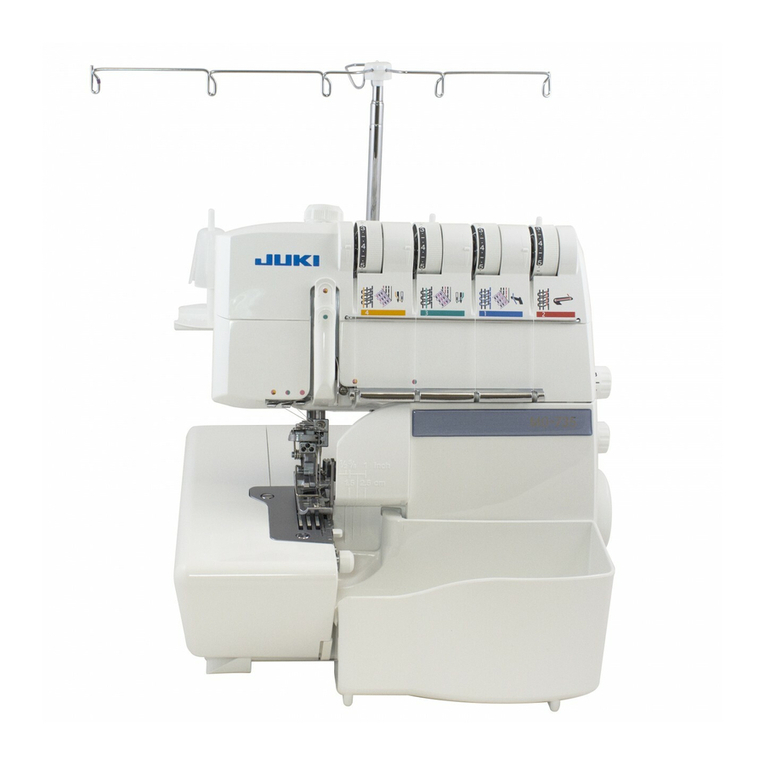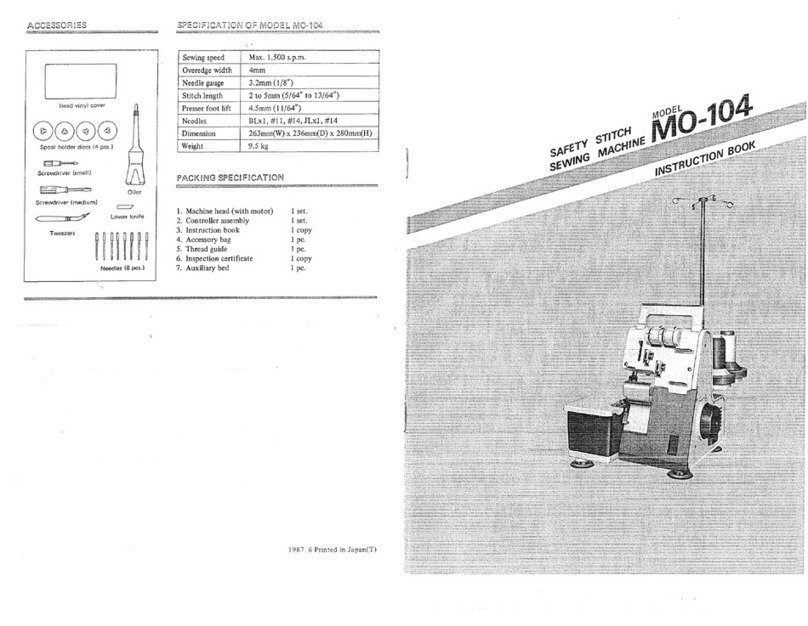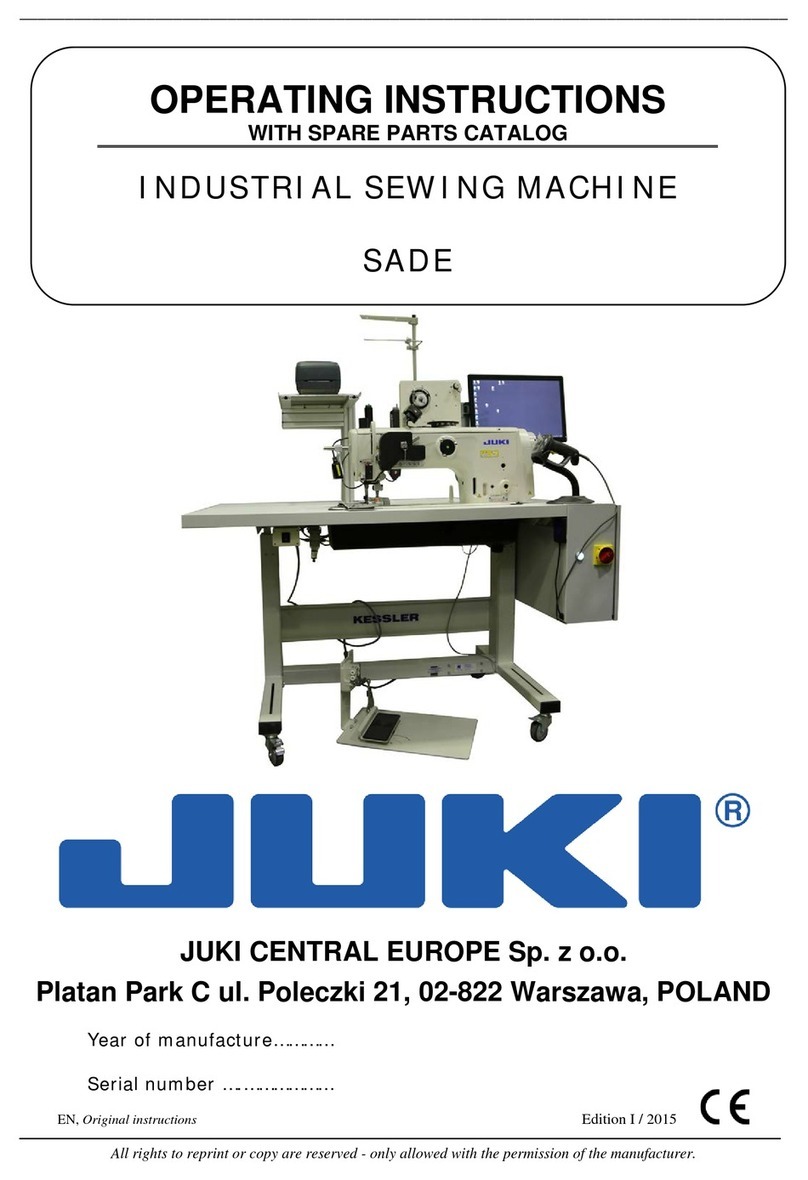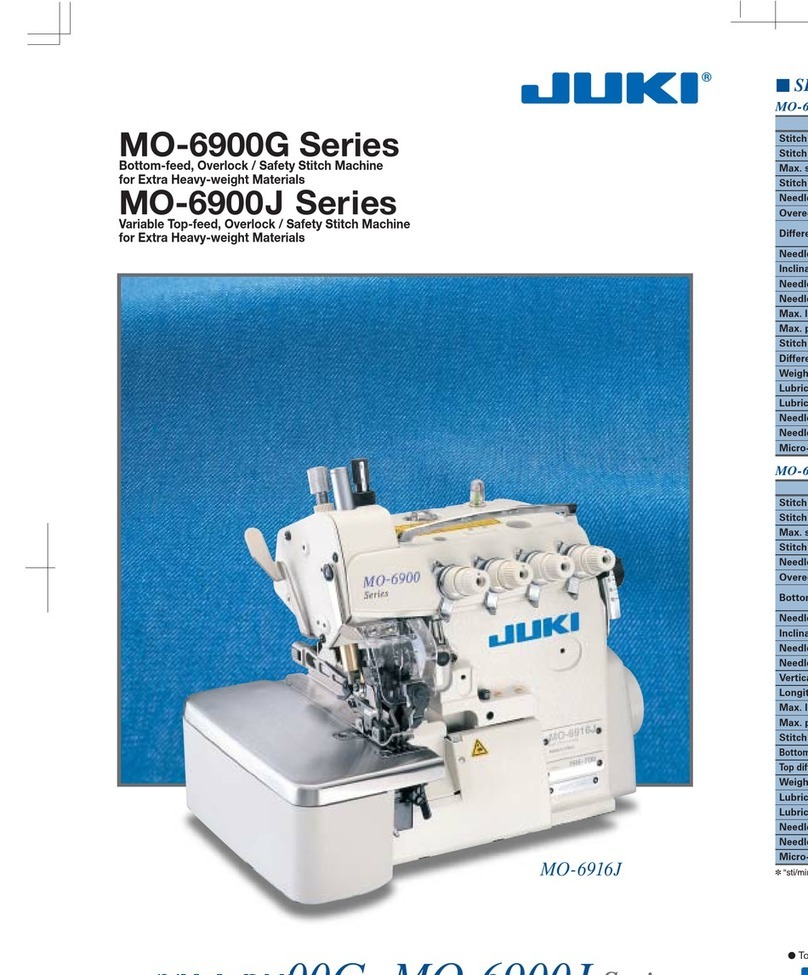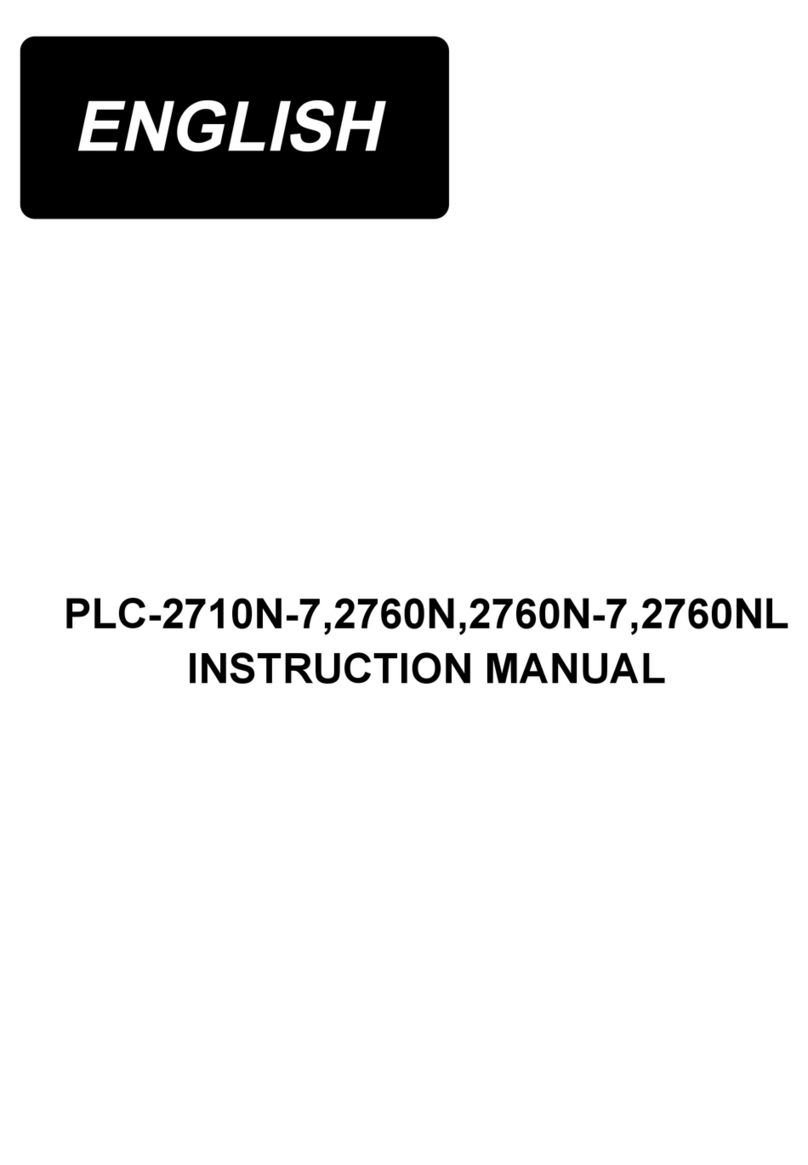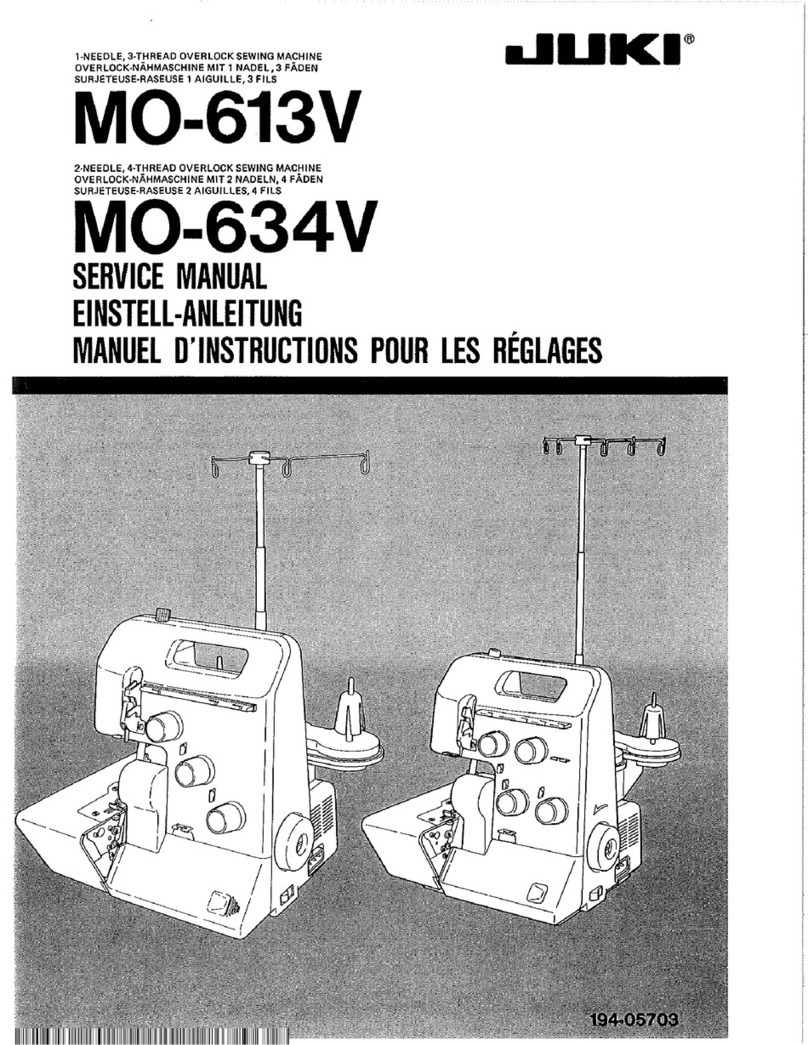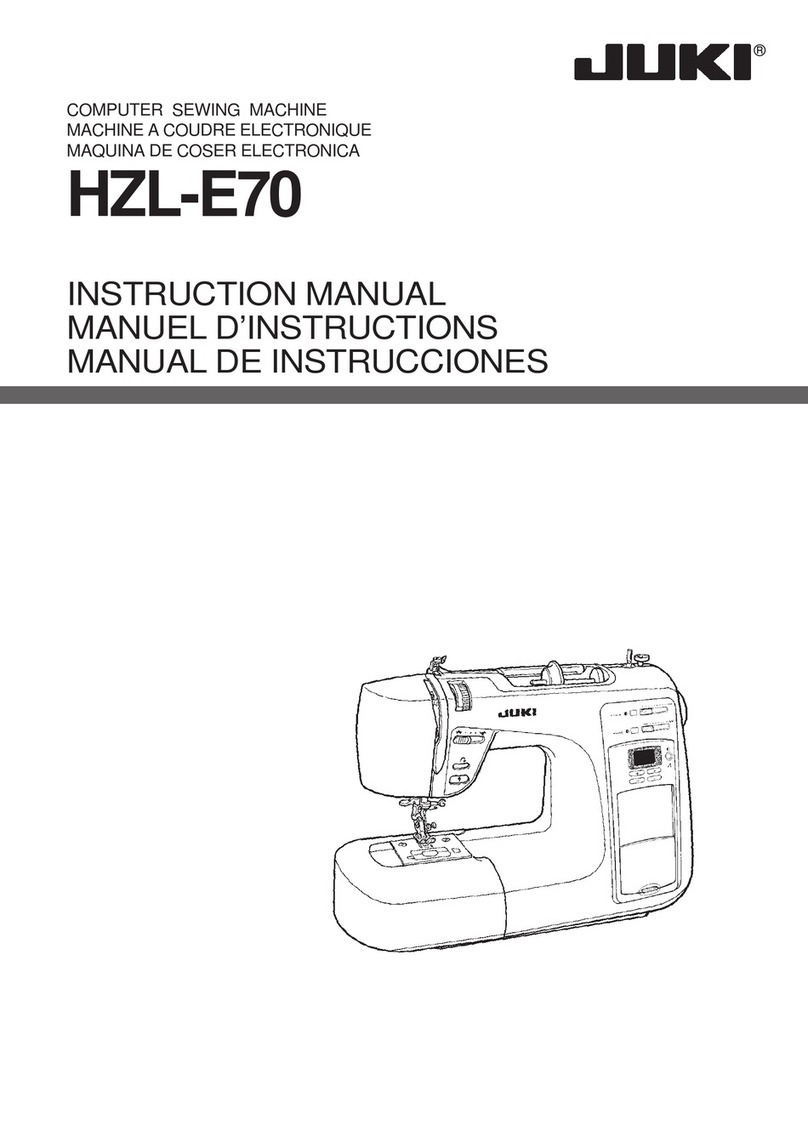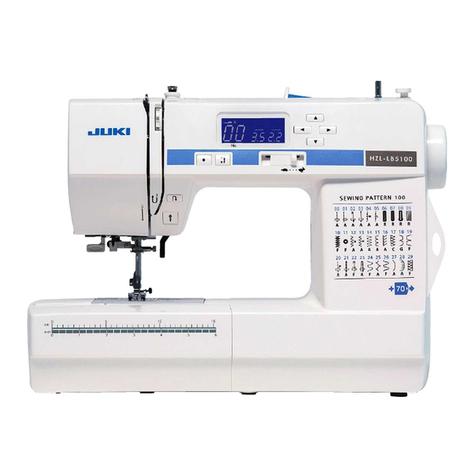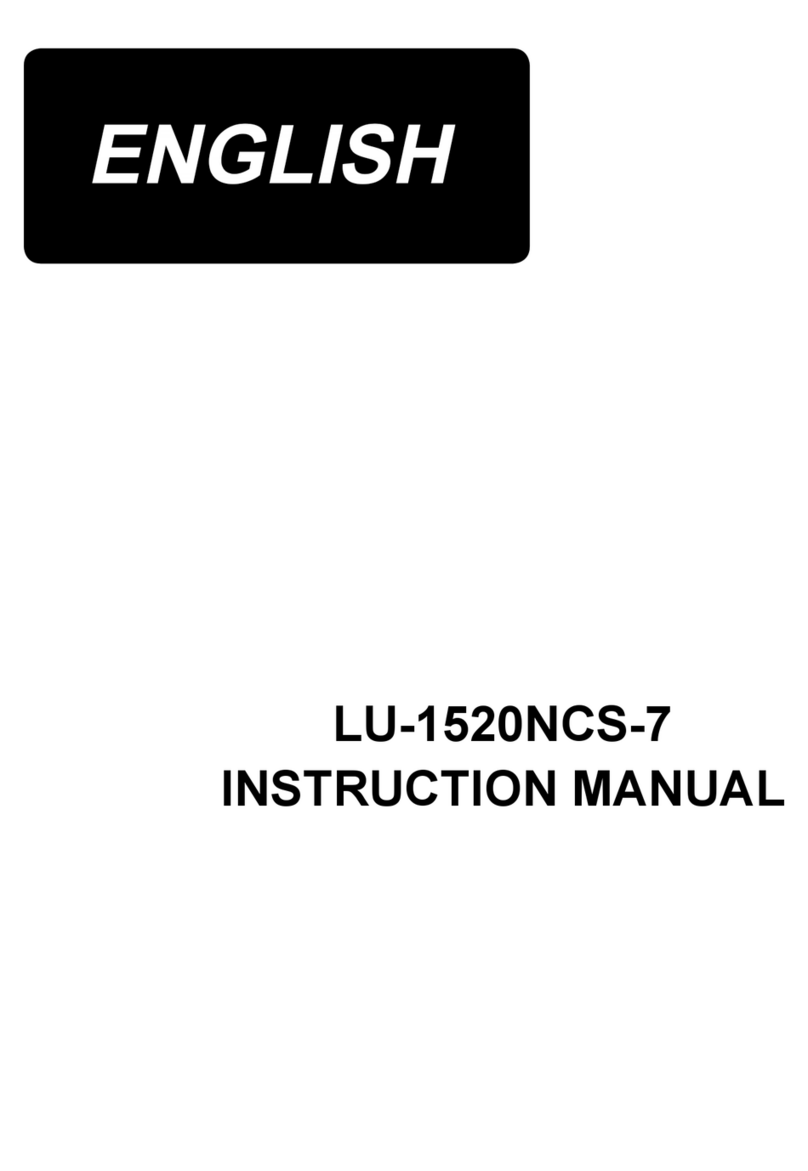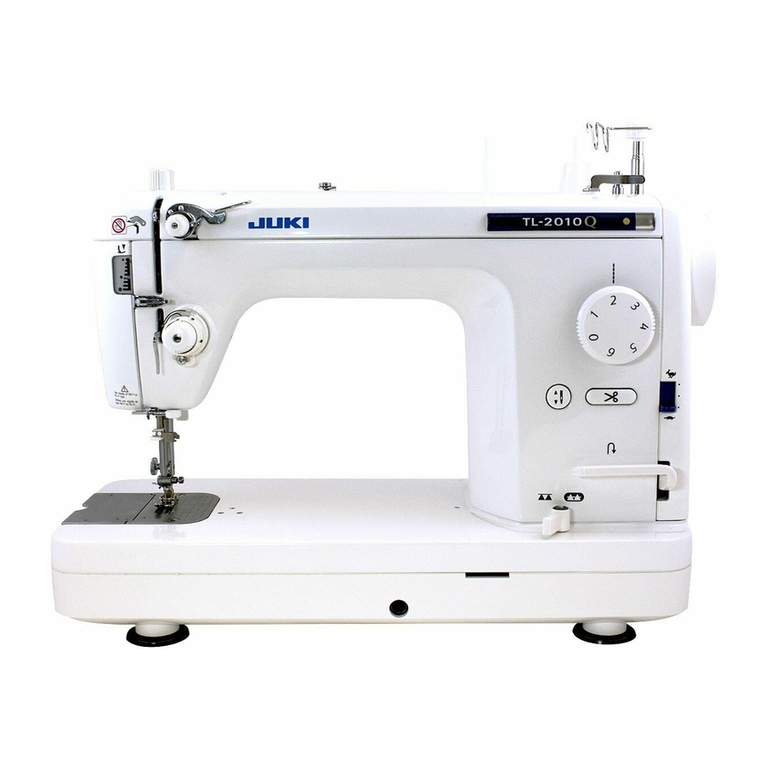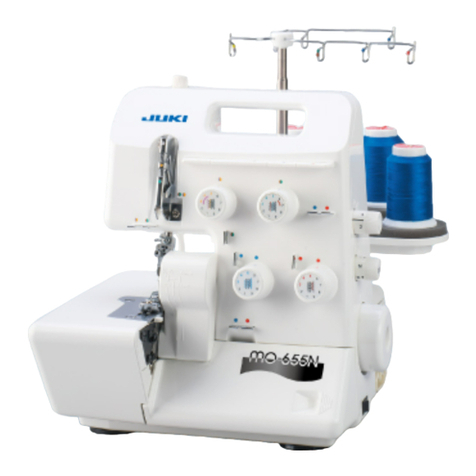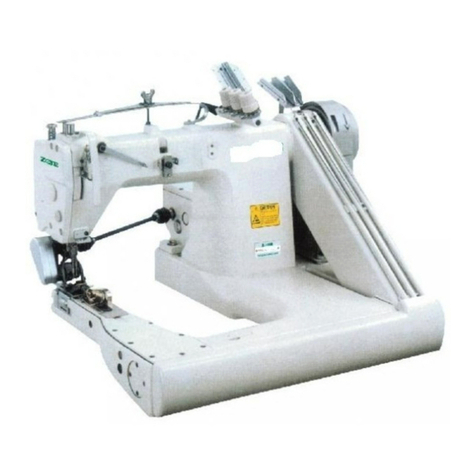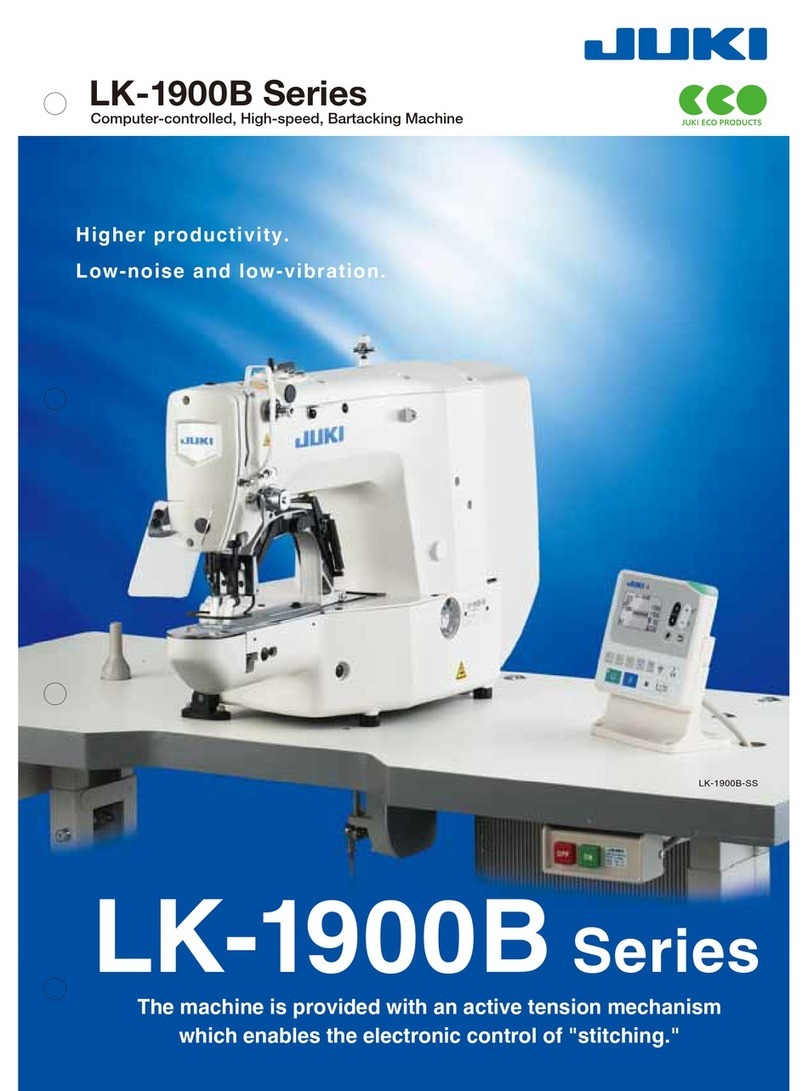!– 7
(3) Changing the voltage of 100 / 200V
WARNING :
To prevent personal injuries caused by electric shock hazards or abrupt start of the sewing machine,
carry out the work after turning OFF the power switch and a lapse of 5 minutes or more. To prevent
accidents caused by unaccustomed work or electric shock, request the electric expert or engineer of
our dealers when adjusting the electrical components.
Changing procedure of the changeover connector
1. Turn OFF the power source with the power
switch after confirming that the sewing machine
has stopped.
2. Draw out the power cord from the power plug
socket after confirming that the power switch is
turned OFF. Then wait for five minutes or more.
3. Remove the front cover.
4. Remove four screws fixing the rear cover of the
control box and slowly open the rear cover.
A. In case of using with 3-phase 200V to 240V
•Changing the changeover connector
Connect to 200V the 100/200V changeover
connector of FLT p.c.b. 1located on the side
of the Box Side of the control box.
•Connectthe crimp styleterminal ofAC inputcord
to the power plug as shown in the figure.
B. In case of using with single phase 100V to 120V
•Changing the changeover connector
Connect to 100V the 100/200V changeover
connector of FLT p.c.b. 1located on the side
of the Box Side of the control box.
•Connectthe crimp styleterminal ofAC inputcord
to the power plug as shown in the figure.
(Caution) Securely perform the insulation
treatment to the red terminal which
is not used with insulation tape or
the like.
(When the insulation is insufficient,
there is a danger of electric shock or
leakage current.)
C. In case of using with single phase 200V to 240V
•Changing the changeover connector
Connect to 200V the 100/200V changeover
connector of FLT p.c.b. 1located on the side
of the Box Side of the control box.
•Connectthe crimp styleterminal ofAC inputcord
to the power plug as shown in the figure.
(Caution) Securely perform the insulation
treatment to the red terminal which
is not used with insulation tape or the
like.
(When the insulation is insufficient,
there is a danger of electric shock or
leakage current.)
5. Check that the change has been performed
without fail before closing the rear cover.
6. Be careful that the cord is not pinched between
the rear cover and the control box main unit.
Close the rear cover while pressing the lower
side of rear cover, and tighten four screws.
It is adaptable to the voltage of single phase 100V to 120V/3-phase 200V to 240V by changing the
voltage changeover connector mounted on FLT p.c.b.
(Caution) When the changing procedure is wrong, the control box will be broken. So, be very
careful.
1
GREEN/
YELLOW
(Plug side)
WHITE
BLACK
RED
WHITE
BLACK
RED
GREEN/
YELLOW
GREEN/
YELLOW
(Plug side)
WHITE
BLACK
RED
WHITE
BLACK
RED
GREEN/
YELLOW
(Plug side)
GREEN/
YELLOW
GREEN/
YELLOW
A
B
C
WHITE
BLACK
RED
WHITE
BLACK
RED
